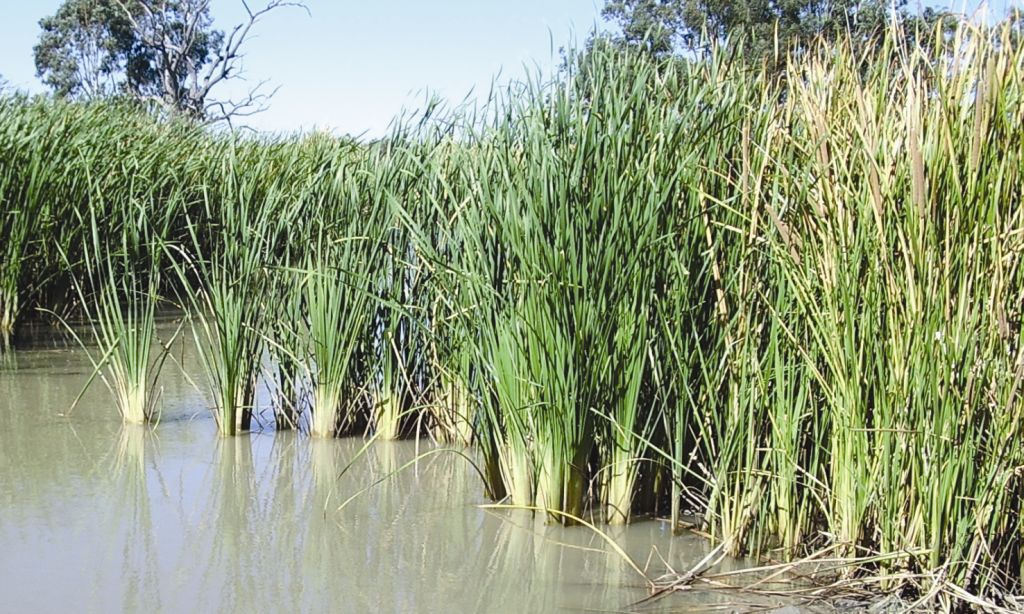Description
Common names
Cumbungi, Typha, Bullrush, Bulrush, Cat"s-tail, Cattail, Cumbundi, Maranda, Miranda, Narrow-leaved Bulrush, Narrow-leaved Cumbungi, Narrow-leaved Bulrush., Narrowleaf Cumbungi, Reed-mace, Reedmace.
Scientific names
Typha domingensis, Typha orientalis.
Family
Typhaceae.
Genus
Typha.
Presence in Australia
Widespread and common throughout region.
This specie has been identified in the following Australian states: Qld, NSW, ACT, Vic, Tas, SA, NT, WA.
Habitat
Streams, swamps, lakes and local water-filled depressions, in fresh or slightly brackish water to 2m deep.
Habit
Erect robust semi-aquatic perennial.
Site preference
Salt tolerant. In shallow creeks, dense stands slow water movement and cause flooding of surrounding land during high flows.
Characteristics
Vigorous, particularly during summer. A major weed of irrigation channels west of the guide area.
Seed collection
Seed is dispersed by wind and water. One seed spike can contain around 200,000 seeds, with a high percentage viable.
Propagation
From seed or by division.
Land protection
Useful to extract pollutants from waste or drainage water. Reduces evaporation from swamps or shallow lakes as plants shelter the water surface from wind.
Wildlife
Excellent habitat for waterfowl and frogs.
Ornamental
To reduce the size of cumbungi stands, cut plants below the waterline in autumn.


